

André Gali
Arlyne Moi and André Gali
In this interview with craft writer, curator and editor Glenn Adamson by André Gali we are introduced to the concept of post-disciplinary practice, and a discussion on a converging visual art scene, where craft no longer takes the back seat.
Norwegian Crafts interviewed Adamson on 21 March 2013, just two days before the opening of one of his latest curatorial projects: the exhibition Tenderness, the 40th edition of the exhibition series Tendenser, at Galleri F 15 in Moss, Norway. The exhibition featured works by Gunnel Wåhlstrand, Mia E Göransson, Marie Torbensdatter Hermann, Karina Nøkleby Presttun, Caroline Slotte, Fredrik Ingemansson, Pernille Braun, Nicolas Cheng & Beatrice Bovia, Hanna Hedman & Sanna Lindberg, Maja Gunn, and Miro Sazdic Löwstedt. Shortly after the interview, Adamson’s second book on craft was published: The Invention of Craft (2013).
I want to start with some broader questions, then move on to talking about the exhibition. In your book Thinking Through Craft (2007), you write about craft in relation to fine art, and you describe it as ‘fine art’s underdog’. Could you elaborate on this thought? Given that materiality and the handmade are gaining more attention both in consumer culture and in fine art, do you still think it describes today’s situation?
‘It’s interesting you should ask this just now because this week I have a new book coming out called The Invention of Craft, which is a sequel to Thinking Through Craft. I suppose the reason I wrote a sequel is because the situation I was describing in Thinking Through Craft was already starting to fall apart, and now I think it’s completely gone, or at least almost gone. This sense that craft is defined by its inferior status is, I think, crucial for understanding the 19th and 20th century, but for the 21st century, it’s misleading. What I try to describe in this new book is the way that craft was invented as a separate field of practice in the late 18th, early 19th century. After that you have this great divergence between craft and art, and industry. They are separated from one another. What I think we are living through now is a great convergence of these things into one undifferentiated field. I wanted to describe that process in the book. This is the short answer to a big subject.’
I want to shift the topic a little for the next
question because it’s kind of an open question. I was thinking of the relation
between craft and design, which is sort of at the other end of the spectrum.
What do you think of that relation?
‘That relation is possibly more complex. I think designers have always respected craft as a value in what they do. So for example, if you think of the Bauhaus; Walter Gropius said, ‘Architects and designers — we must all return to the crafts.’ This is the first line of the Bauhaus Manifesto (1919), and it’s the centrepiece of the story of Modernism. So clearly, the relation between craft and design doesn’t have this kind of oppositional quality or structure.
However, I think it’s also true that designers tend to think of craftspeople, artisans, as being helpers and as being interchangeable: you can just hire in someone else’s hands to complete your idea. There are so many examples of that. A great one would be the example of prototypes. When you have a handmade object that is created as a model for a later industrial product that will be mass-produced, of course that prototype is a craft artefact, but the person who made it is never credited, and they are not thought of as designers, they are almost taken for granted. So I think that in the case of design history, you have this very complicated situation where craft is simultaneously celebrated and erased. I think again now, that is changing, because now you have this sense that craft is a unique selling point, or it’s an aesthetic that is in vogue. So Tord Boontje and Mon Arid, Hella Jongerius, Joris Laarman —you can go on and on — all these designers are very oriented towards craft, and that doesn’t necessarily mean they present themselves as artisans, but they want to exhibit a kind of artisanal value in their work. Again, this is an example of the convergence I’m talking about. ‘Post-disciplinary practice’, I usually call it.’
Post-disciplinary practice, I like that term.
‘I use the phrase in several senses; first, in the sense of not having separate disciplines anymore, but also in the sense that the whole field of creative practice is undisciplined — it’s freer, and this is a Postmodern condition.
When I curated this big exhibition on Postmodernism for the V&A in 2011, I would talk to people from that generation, for example the musician David Byrne (b. 1952). He said he didn’t really know what Postmodernism was, but if it meant doing what you wanted, then he was all for it. And it struck me that there was a great generational shift there, where people his age, who grew up in the 1970s, were always having Modernists telling them what to do and what not to do. And I think now, students are struggling with the opposite problem, which is that nobody tells them what to do. They therefore have this sense of infinite permission, and it denotes another sense in which you have a post-disciplinary situation, because there is literally no discipline, there is no disciplinary authority at work, not even any good or bad. We say things are interesting or not interesting, but they are not good or bad because we don’t have rules or objective standards anymore. It’s a difficult, fascinating situation to be in if you’re an art student, I think.’
Are you critical of the convergence which you see?
‘No, I think it’s crucial. Because the insights a maker gains from material-based knowledge and design skills — here I’m thinking about functionality and commercial aesthetics, and then the conceptual freedom that you have in fine art — I think they complement one another so well, and it’s only by combining them in one person that you can actually have somebody who can contribute to the world in a responsible and effective way, because they can think in a way that will be successful in a marketplace. Their practice is conceptually complex and materially solid; it has integrity on every level simultaneously. This is a lot to ask, but I think it is only by drawing from all these traditions that you can have any chance of creating a successful 21st-century object.’
But do you still think they should be linked to one person?
‘Yes, mixed together. And of course, everyone mixes
these strands together in a different way. It’s not that you have to be a
craftsperson, a designer, and an artist at the same time; it’s more that you
have to take responsibility for every aspect of your practice. And back in the
Modern period, those things were divided between people who were thought to be
specialists in each area. I don’t think we can think that way any longer. Part
of it, obviously, is digital space, and the way that you can now exchange ideas
so much more quickly; you can learn more quickly. It’s impossible not to be
aware of what’s going on around you now. This is true politically, culturally,
and, I think, also artistically.’
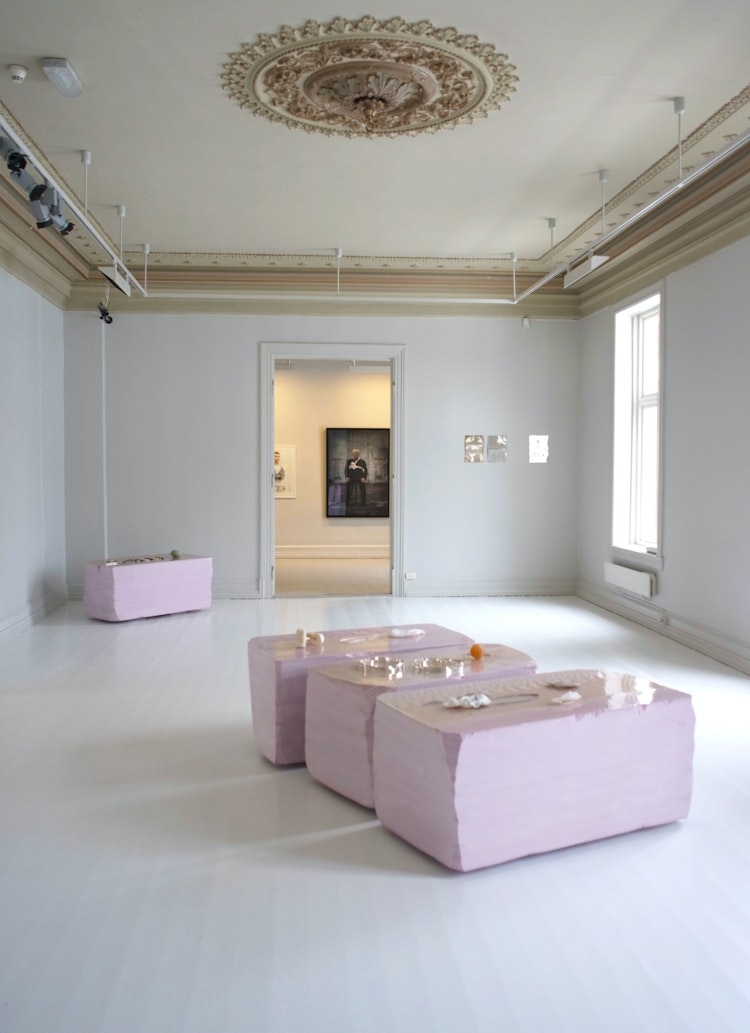
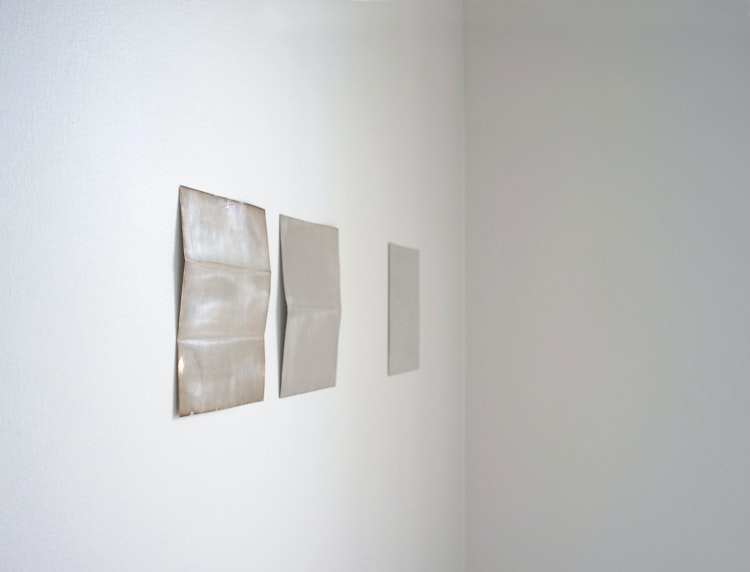
To connect these ideas to the Tenderness exhibition; do you think the artists you have chosen — or craftspeople — have all these qualities?
‘I think they do to some extent. Although that wasn’t the point of the exhibition. I think it was something I took for granted when making the exhibition. I think Nicolas Cheng and Beatrice Bovia, whose works are exhibited upstairs, would be perfect examples of what I’m talking about. Because how would you categorise them? They are laboratory technicians, material scientists, sculptors, entrepreneurs, jewellers, product designers — they do all these things and they don’t care what you call them. So they are very good examples of what I’m talking about. Not everyone in the show works in that really open way, but certainly, the exhibition is not about categories. It’s not about crafts as a set of existing disciplines that have to be acknowledged. So you have ceramics, textiles, metal, you have some traditional craft media, but that doesn’t matter; it’s much more that you have a statement about what craft means culturally.
What I was thinking was this: what’s important about craft? Well, one thing is that it provides an opportunity for emotional contact between people, within families, or when you give someone a gift, or even a pair of artists working together, like Nicolas and Beatrice, or even the emotional relationship that a maker has with their own object. This is why there’s that video of Fredrick Ingemansson making the silver cup from his own perspective. These are all different forms of tenderness, different forms of care. And I suppose I was trying to acknowledge that. I wrote about this in the catalogue. But that is not what I have mostly done as a curator. Most of my work is very theoretical, very critical, quite hard, really focusing on things that are difficult and sometimes negative, like political asymmetry, repression and labour politics, things like that. I wanted, in this show, to do something much more personal, much more affective, more sentimental almost.’
Why?
‘Partly because I’m moving away from working on craft. I’m thinking about other issues. Having written three books on craft, in rapid succession, I feel in some ways that it’s time to move on to other topics and give someone else a chance to talk. Not that I’ve been occupying all the space, but I think you need to realise when you’ve said your piece. Then you need to move on. So partly, it’s like a goodbye letter or a love letter, or like a token of appreciation for everything craft has brought me. But also, it’s a matter of ‘growing up’ as a curator and feeling like I have the confidence to be more personal. Like, you know, my partner now is an artist, and I’ve been with her for a couple of years. Being with her and seeing how she works as an artist has influenced me a great deal. I think it has given me the courage to be more expressive and direct and more personal in the way I work. I certainly would never have risked doing something this exposed before, you know, where I thought each of the works actually touched me, in the heart instead of the head. And now I feel much braver about doing something like this. It doesn’t have to be an argument. It could just be a feeling.’
Do you think your curatorial practice from now on will change and become more personal?
‘Yes. Definitely. I feel this exhibition came out very well. There are a few instances where I just got lucky, and in other instances the artists delivered really well. For example, Karina Nøkleby Presttun delivered so well, so beautifully, and worked very hard to do that, over the last two weeks, to finish her work. So I’m aware that it’s not just from my ideas or the way I’m working. I think part of the outcome is a matter of good fortune. But I also feel it gives me the conviction to approach the way that I might work at the V&A differently, for that takes place in a much more institutional context with many more constraints. I think I would still like that work to have this degree of individualism about it.’
Do you also think you will step away from the crafts field as a curator?
‘Yes. But I think in terms of the major projects I take on, it will always be there. You know, it’s not possible, when you work on something for 20 years, to just drop it. So I think that whenever I approach another subject, I will always think about where the craft is in it, and make sure I think about it and acknowledge it. Partly because so often craft is overlooked, taken for granted, even now, despite what I say about the 21st century, the post-disciplinary condition and all that. Craft still gets overlooked all the time, and I don’t want to become someone who does that.
Let me give you an example. The next exhibition I’m doing at the V&A is about the concept of the future. It’s about how artists and designers look far ahead and propose things that are impossible maybe in their own time. I’m looking at this theme historically, from the Middle Ages up to the present. So you see how people in the 18th and 19th centuries thought about the future. One thing you notice immediately, if you have this craft mindset, is that the future is almost always handmade first, through prototypes, which I was talking about before. Even the first nuclear weapons were handmade. So it’s not just good things, but also scary things that were handmade first. Because how do you make anything first? You just sit down and do it. And that means it’s crafted, usually. And even now, the way people use digital renderings as a way of projecting the future has a very artisanal quality to it, very carefully built. So in some funny way, that ‘future’ show is going to be a craft show as well. It doesn’t necessarily come across that way, that’s not what it’s about, but for me, it will still be a craft show.’
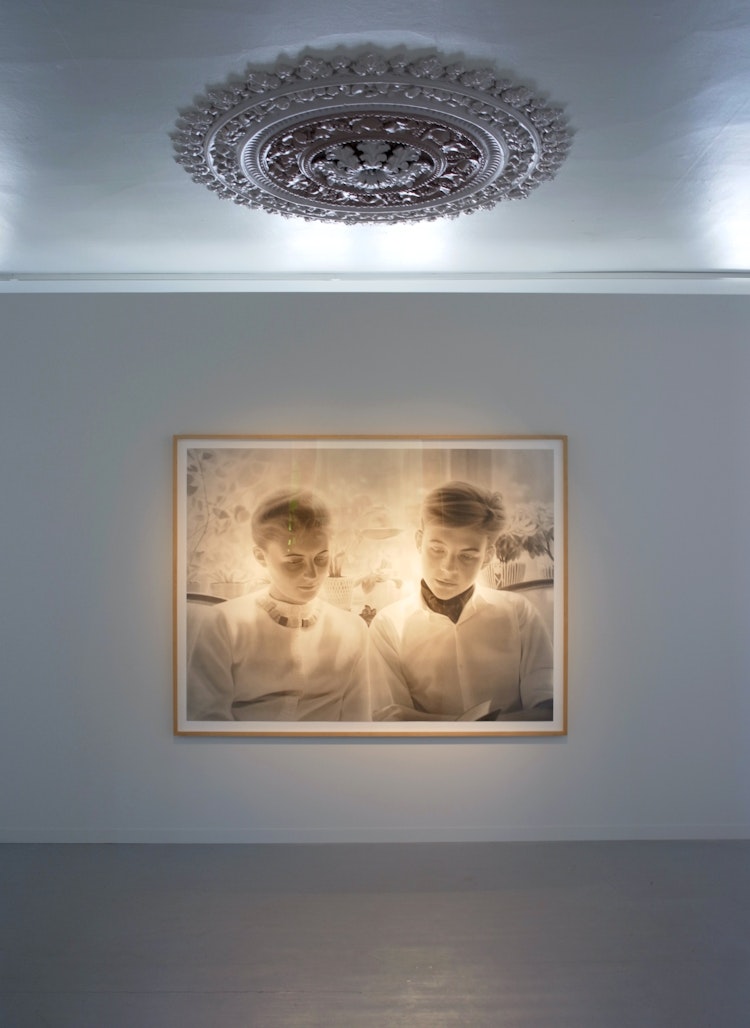
The exhibition Tendenser 2013 Tenderness, is a kind of Nordic exhibition?
‘Yes. I was asked to do a Nordic survey.’
In light of ‘Global Design History’ — and here I refer to a book you co-edited in 2011 — what perspective do you have on there being a Nordic identity or a Scandinavian identity in crafts/design?
‘That’s a very good question. When I was asked to curate the exhibition, I actually was a bit disappointed about it having to be regional, because I don’t tend to think very regionally, as you can tell. I think especially now, it’s so important to think about global connections and networks whenever you think about anything. But then, I suppose there were two things that made me glad, ultimately, about focusing on this part of the world. One is that you can discover the global aspect in any place. In fact, when you look at the artists in this show, they are from all over. Beatrice Bovia and Nicolas Cheng, who I mentioned before, are from Italy and Hong Kong. Miro Sazdic Löwstedt is from, I think, Croatia or somewhere like that. The artist Marie Torbensdatter Hermann is Danish but works in America. So actually it’s very global, even though it’s Nordic as well. So there is that. There’s the sense of marking the bigger shape of things through a local snapshot, which is quite nice. It’s like taking a photograph of one part of a building in a way that expresses the whole building. So there is that.
But then there’s also this idea that the Nordic countries have a reputation for a certain kind of tenderness. This is undoubtedly true, yes, and it’s the perfect place to do this show because of that. Consequently, there are many ways you can think about ‘tenderness’. One is the concept which in Swedish is called folkhemmet — the idea that the government takes care of the people, we are all in it together, like a big family. It’s this idea of a social contract. I think this is really inspirational to people outside of the Nordic countries. There is a way of thinking about the politics here as having an aspect of tenderness. And of course this is an ongoing struggle, but at least you’re trying. In many other parts of the world, for instance the USA, which is where I’m from, it’s not even an issue — this idea of caring for people. Old people, young people, immigrants, people who are born here — it doesn’t matter; everyone is cared for in some way.
From a narrower frame of reference, you have the idea of the ‘soft modern look’ of Nordic design. The Hans Wegner chair, or any of the metalwork that was done here, e.g. Georg Jensen’s silver — it has this kind of curvy, human quality to it. And I suppose I wanted that to be a distinct quality as well.
Another thing I will mention, which I didn’t know about earlier – it’s a discovery I made this morning while talking to the director here — is that this building, F 15, was taken over by the Nazis as a station for their officers during WWII. The fjord here was something they wanted to keep a lookout on, so they built a base here. And the white stove in the first gallery where Gunnel Wåhlstrand’s work is — that was actually put here by the Germans. The other stoves in the house are original, but that one is from the 1940s. So when he says that, you realise this white, classical, very imposing, official-looking object, and it’s sitting there — as he said, you can imagine the Nazi officers with their elbows on it. And then you turn around and look at that picture of the two young blond children — that picture is probably from the 1940s or ‘50s — they’re reading, about the past maybe, a storybook, who knows? And it just brings this whole new meaning to the show. And then you turn to the right, into this black — tears pouring down the wall. And you feel like it’s about the history of the place, in a way that I had not even anticipated. And that’s another thing I’m saying: you get lucky sometimes. Because I mean, now there’s a whole additional register I didn’t know about when I curated it. It’s really magical. It’s about a sense of place: you could not do just this anywhere else.’
I wonder if you could elaborate on the artists you’ve chosen and their works. Have you commissioned these works or have you selected already-finished works?
‘The closest I came to commissioning something was Fredrik Ingemansson’s video. Maybe I should say something about how I chose the works rather than going through them one by one. I was already well acquainted with some of the artists, for instance Caroline Slotte and Marie Torbensdatter Hermann. And who else? Who else did I know before I curated the show? Maybe just them actually. But everyone else, I met as I was putting the show together. And I almost curated it on the basis of who I got along with.’
Ha, why not.
‘Yes. I think it’s very unusual to curate that way, but I thought that for this show, curating it in a way that was about being friends and trusting one another — that was a big part of it. So when I met someone who seemed to understand what I was saying, and we could have a good conversation about it — that seemed as important as their work. When I wrote the catalogue, I would say, ‘I had a fantastic time visiting with this person,’ or ‘I’ve known this person for years,’ so it’s not the standard kind of critical objectivity.
And I do feel there’s a kind of honesty to that, which I was interested in. Because curators often will almost disguise the fact that they are friends with the artists they are curating. And of course they are, because you work with them very closely. So I wanted to make a show that was much more open about that process, a show that had a personal as well as a professional dimension. Not that it’s not professional — obviously, I do respect all of them as professional artists, otherwise I wouldn’t have included them. But it also has this element of caring about them as people. I could tell you more about each of the individual artists but that would take a long time.’
Maybe you could say a bit about the works, why you chose them or what they evoke in you?
‘I’ll give you a couple of examples. Gunnel Wåhlstrand’s painting I’ve already talked a bit about, and in fact it was what gave me the idea for doing the show. I was in Parasol Unit Gallery in London in 2011, and I happened to be alone there at the time. When I saw this particular work, it brought tears to my eyes. I suddenly had the idea of doing a show called Tenderness. I knew the series was called Tendenser (Tendencies), so it was a wordplay.‘
Ha, very postmodern to play with words like that.
‘In that same moment I thought of the song Sentimental Journey, and I remember standing there with my eyes wet, whistling that song, to see what it would feel like. Because when you walk into the exhibition, you hear the whistling. So I kind of tried that out in that space. In a way, the whole show came from that moment, the encounter of that one work. For me, that picture represents a whole other order of thing, in terms of its meaning in the show; it’s like the emotional core of the whole show.
Other works that might be worth mentioning, which I have
not talked about yet, are Karina Nøkleby Presttun’s portraits of her friends. I
think those are really powerful, especially for such a young artist. I think
she’s going to become a major figure, really. And one of the things in this
show that makes them so important is that they are her friends, and this idea
of having your friends dress up in these — you know, boys dressing in girls’
clothing — it just gives you this sense of the kind of, well, funny and
slightly embarrassing and intimate relationships that people can have when they
know one another really well. And I think she has managed to give that to you
in a very direct way, without any sense of embarrassment. I really respect
that, and I think it’s quite difficult to get that into a work of art – the
sense of being let into somebody else’s community in a way that is not, you
know, ‘Look how cool we are.’ Like Nan Goldin, the photographer; you could
compare it to what she is doing in some ways. But I think with Nan Goldin, you
get the feeling of this insider subculture that you are not invited to join,
whereas with Karina’s work, I feel it’s much more open, playful, and
celebratory. And then obviously, the way she has spent weeks and months
laboriously building these pictures and spending all that time with these boys
in a way that suggests all this care and commitment. It really speaks a lot
about their emotional relationship.’
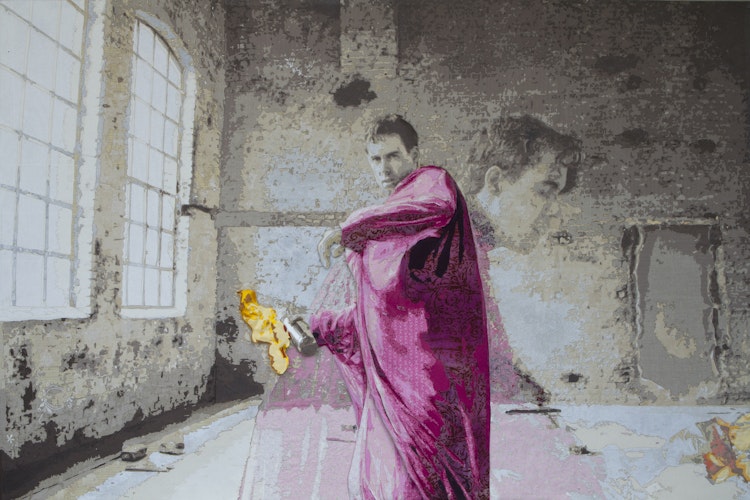
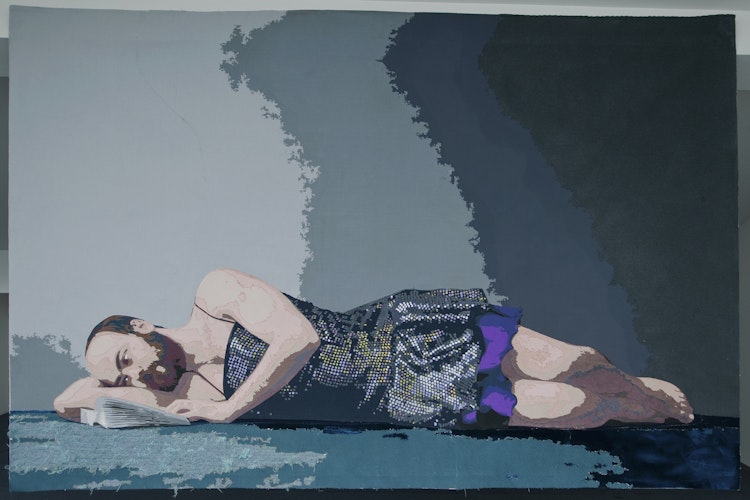
‘Then it would be worth saying a bit about that room of photographs, because that is something you certainly don’t expect in a craft show: a photography gallery all of a sudden. But what you notice is that all the people are wearing handmade things: there’s jewellery by Hanna Hedman; Maja Gunn is a fashion designer so she’s dressing that person up — it’s sort of an extension of her design activity. Then Miro Sazdic Löwstedt’s work features this sculptural object which is like a bandage. Her father is in the picture, so she’s sort of costuming him. What I wanted in that room was a sense of encountering these handmade things at one remove, through the photograph, and also the sense of the maker working with another person — again, this idea of gift giving or creating contact through an object. And of course there was the idea of a lifecycle. So you have the idea of innocence in the little child, and hope. Then you have this black man who is very uncomfortable with the idea of being dressed up in this way at first, but Maja manages to coax him into enjoying it quite a lot. And eventually it becomes quite sexy — you know, you have him lying sideways, and, you know, little pants, and yelling and putting lipstick on, and dressing himself and making himself up. So you have the sense of discovery. That is like adulthood — it’s about that act of making yourself. Then Miro’s father is sitting there like a kind of building in this huge space, black, heavy, solid, like a monument really. For me, that picture is about experience and wisdom and also being at the end of life. Maybe it’s about being resigned. So I think if you take it all together, it’s sort of both joyful and a bit sad, which is what I was going for in the whole exhibition. The whistling is meant to be both funny and happy and a little light, but it’s also meant to be quite poignant and melancholy.
The last work maybe to talk about is Fredrik Ingemansson’s piece, the silver object with the video. That is the idea of being let into the maker’s view, and the maker’s intimacy with the object. But it’s also meant to function as a punctuation mark for the whole show. My idea was that you would see it last — although people can walk about any way they want — but if you do see it last, then hopefully it encourages you to think about the fact that everything you’ve seen has been handmade in that way, and none of it was easy and it all required this great amount of care and knowledge. So even the jewellery you only saw in photographic form in the next room had to be made like that, or somehow had to be made.
I felt like returning it to crafts. Given that they had asked me to do a crafts show, that was quite an appropriate thing to do: to say, ‘this is the baseline, the foundation of everything else.’ If you don’t know how to make something, then you can’t explore these emotional or creative or expressive areas. It does come down to craft in the end, after all.’
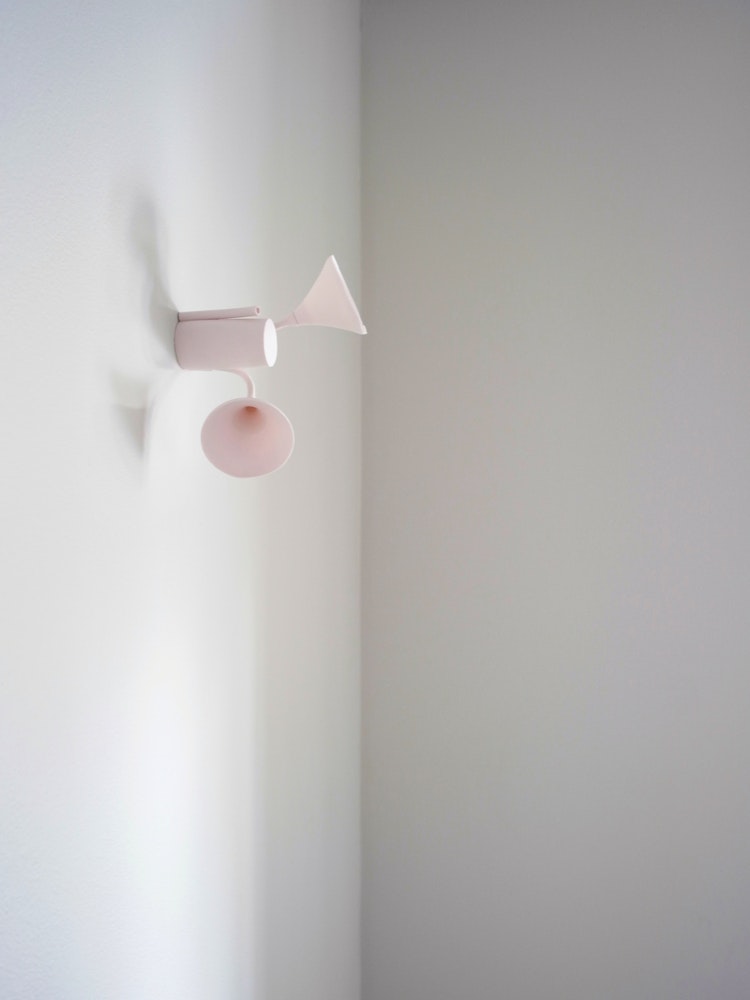
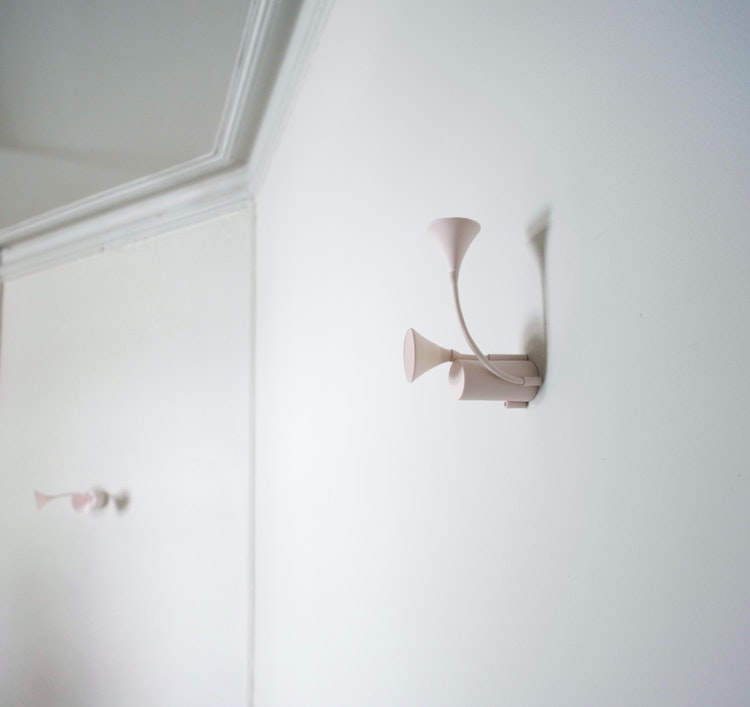
I just thought of something when you were talking about gifts and how these people have been interacting, like Karina Nøkleby Presttun and the photographer. It may be a long shot, but it’s something I’m starting to look at — the relational aspect of craft. I’ve been very interested in Nicolas Bourriaud for several years, and I’m now trying to see if there’s something interesting there for crafts. Have you any thoughts on that?
‘Oh definitely. I think the problem I have with Bourriaud is that I don’t think you can have relations with people in general. And I think that’s a real problem with his theory. He, I think, feels an artist can create a situation of participation that has a human content without wanting to get into the specifics of what that relationship is going to be. And in a very ironic way, he’s the most elitist curator I can think of. When he did that show at Tate Britain, called Altermodern (2009), I don’t think I can ever remember feeling as excluded by a show. It was absolutely him and his mates. It was a perfect example of a curator who doesn’t really acknowledge that he’s curating his friends. I feel his politics of relating are actually in some way disguising a repackaging of a politics of exclusion and insider information. Yah. So in that way, I feel very opposed to it. However, I feel that what he is saying about art as a way of making contact is really crucial, and in this respect it’s very compatible with something I talk a lot about in The Invention of Craft, which is John Ruskin’s idea of ‘affection’ happening within a craft object. Ruskin says that in a workshop, or even in a factory, you should consider everyone you work with and make things with to be like a member of your family; you should treat them with the same amount of love and consideration that you would a child or a parent. I think for me, the thing about craft is that it’s not just an open-ended relation; it’s specific. It’s like, ‘I have made this for you.
That’s one reason why I wanted Mia Göransson to come with these pink ceramic objects that look kind of like flowers. I wanted to engage her in this process we will do this afternoon, of sort of decorating the rooms and ‘giving’ these flower-like objects to the other artists, and having this sense of — I was thinking it was like when you go to a Master’s show or degree show at an art school. Family members always leave flowers in the corner of the student’s work. That’s often a very strong aesthetic component in a degree show. But you don’t notice it as an artistic component.
Well, I wanted to make that sense of generosity a part of this exhibition experience. So I do think there’s something inherently relational about craft. Because it’s generous, inevitably. Like even when you sell something to someone; if you’ve spent a lot of time and care on it, then you’re also giving them a part of yourself, a part of your own past. And you’re making a connection to them. But to me, certainly, at its best, it’s specific. It’s about real people actually dealing with one another, with all the great and problematic things that happen when you try to deal with someone else. So for me, it’s not just about relationships but about tenderness, it’s about feeling that sense of exposure and vulnerability. I think vulnerability is a very important word for this show. I think the artists, and I as curator, have tried to make ourselves vulnerable in ways that are not normally the case. Ha! I’m very curious to see what people make of it.’